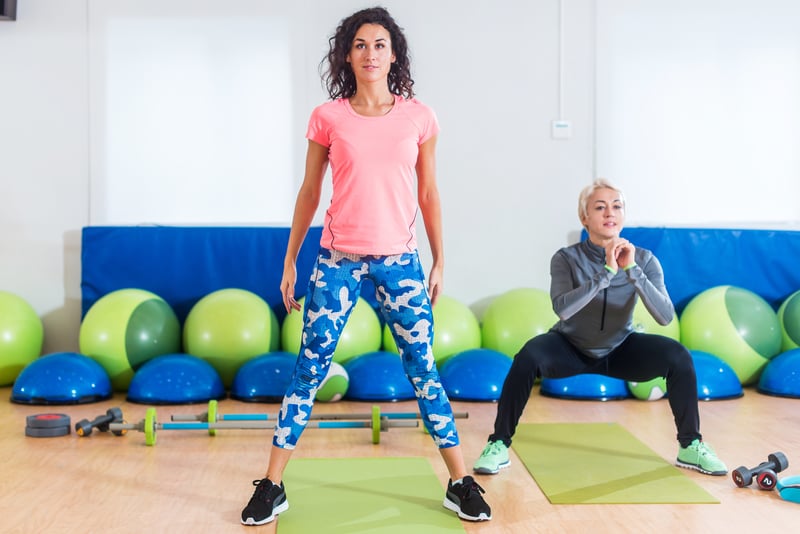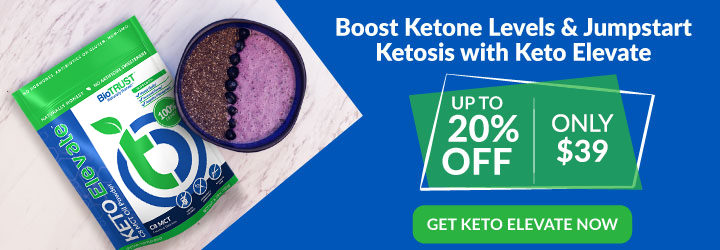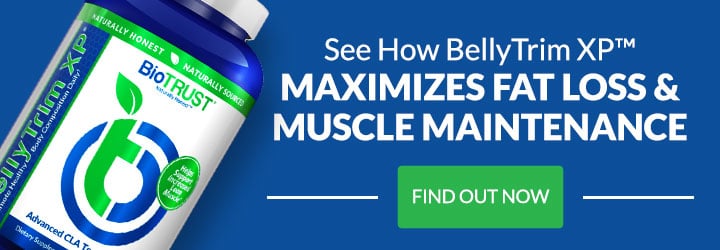21 Popular Fitness Trends to Embrace in 2019 (and 7 to Avoid!)

Are you striving to embrace a healthier lifestyle this year? Taking a look at your exercise program, how you’ll eat, and how you’ll supplement to get more fit? If you spend even just a couple of minutes on a Google or social media search, you’ll find tons of recommendations on how to lose fat fast, gain strength and muscle, and get back into shape.
But what works and what doesn’t? While most fitness trends are just, well, trends—here today and gone tomorrow (ThighMaster, anyone?)—with varying levels of effectiveness, there are some that “fit” the bill, so to speak. That is, certain trends indeed stand the test of time by helping us become healthier, leaner, stronger, and more fit.
Here are 21 positive fitness trends to consider (followed by 7 you’ll definitely want to avoid).
21 Fitness Trends to Embrace in 2019
1) Morning routines. If you listen to any podcasts or read any books on personal development and success, you’ve likely come across “morning routines.” While some are extensive and complicated and others are short and simple, the basic idea is that how we start our days can have an enormous impact on the rest of the day—frantic and panicked or productive and peaceful. On one hand, a solid morning routine puts you in the driver’s seat, giving you some semblance of control before the chaos of the day has the chance to take over. On the other hand, routines build momentum, which is especially important on those days when inspiration and motivation are seemingly missing in action.
There is no best morning routine for everyone, but the right morning routine for you could help you get the day started right and stay on track the rest of the day.
2) The Endocannabinoid System (ECS) and CBD. You may have heard whispers about CBD, which is short for cannabidiol, one of the many phytocannabinoids found in the cannabis plant (more specifically, hemp). Unlike the more notorious phytocannabinoid THC, CBD doesn’t have any psychoactive properties (i.e., it doesn’t get you high) yet may provide even more health benefits. Now that the U.S. 2018 Farm Bill legalized hemp cultivation, CBD and the ECS are entering into mainstream conversation. The ECS was discovered only 25 years ago, and research is now exploring its role in everything from neurodegenerative disorders like Alzheimer’s and Parkinson’s 1 to arthritis 2 to cancer 3 and more.
We’re really only on the brink of understanding the tremendous role that the ECS plays in human health, and this is arguably the next frontier in scientific discovery. You can expect our evolution of understanding of the ECS to follow in the footsteps of all the recent study on gut health and the gut microbiome.
3) Meditation and mindfulness. Sure, meditation has been around for thousands of years, but it’s getting more and more attention in our fast-paced, crazy world. It helps us tune into our bodies and our feelings. In addition to the positive effects on the mind, meditation has also been shown to help with pain reduction, support the immune system, increase blood flow, and reduce the stress hormone cortisol. 4 Here’s how to get started.
4) Keto diet. The ketogenic diet, or “keto” for short, continues to gain in popularity year over year, and 2019 is no different. When it comes to losing weight, keto can be very effective, and you can find a wealth of information throughout the BioTrust blog as well as on the BioTrust Radio podcast on keto, its pros and cons, and how to follow it.
5) MCT oil. Whether you follow a ketogenic diet or not, you have likely heard about MCT oil. These functional fats are gaining popularity due to their wide range of benefits including increased energy, increased ketone bodies, enhanced focus, increased metabolic rate, decreased appetite and cravings, and even reduced body fat. This is one new trend we believe is definitely worth learning more about.
6) Intermittent fasting. While intermittent fasting has been around as long as humans have been, it’s gained a lot of traction in the last few years as we’re now beginning to understand how effective it can be not just for weight loss but for metabolic health, heart health, circadian rhythms, gut health, and even longevity.
7) Mindful/intuitive eating. While the word “diet,” which is associated with restricted eating and isn’t going away any time soon, according to Pinterest, more people (+475%) are looking for nutrition plans that help them become more mindful about the foods they consume. As Coach Tim recently explained, “…mindful eating involves paying attention to our food, on purpose, moment by moment, without judgement, and it’s an approach to food that focuses on individuals’ sensual awareness of the food and their experience of the food.” And “how we eat may be just as important as what we eat.”
8) Cutting back on alcohol. Whether you’re cutting back, going a full month without drinking (e.g., ‘Dry January’), or looking for non-alcoholic drink alternatives, interest in decreasing booze consumption has grown by a surprising 746% according to the Pinterest trends report. The term “sober curious” is also on the rise as some people are beginning to question their views of alcohol and how it may affect their health and well-being.
9) Cooking heads home. It looks like many people are finally getting the message that whole, minimally processed foods prepared at home are best. If your diet is made up of lean meats, vegetables, fruits, nuts, and beans, you’re not only getting a healthy balance of macronutrients, you’re also getting a rich supply of micronutrients and phytonutrients to support your immune system, gut health, and a healthy metabolism. Even better, veggies are increasingly becoming the star of the show—even for those who don’t rely on a plant-based diet.
10) Mushrooms. While mushrooms have been used medicinally for thousands of years, they are now being examined for their potential to help boost brain power, support healthy endocrine function (think: hormonal balance), and as powerful antioxidants, among others. Even more, certain mushrooms have adaptogenic properties, which means they can help energize and revitalize as well as calm and de-stress the mind and body. The research is evolving and some to keep an eye on include reishi (for weight loss, immune health, improved mood, and better sleep), lion’s mane (for a brain boost), chaga and turkey tail (for a potent antioxidant boost and immune system support), shiitake (for heart health), and cordyceps (for a boost in energy and improved athletic performance).
11) Wearable fitness technology. They’re back… actually, they never really went away. And it’s likely safe to say that they are here to stay. Wearable tech includes smartwatches, heart rate monitors, and fitness trackers. And even the less-expensive tech has improved in terms of accuracy and can help track everything from steps to heart rate to calories to sleep (estimating both hours slept and quality of sleep). In addition, numerous exercise apps are available for virtually any mobile device for on-the-go fitness.
12) Streaming workouts. Want an instructor-led workout class but don’t have time to head to the gym, are on the road, or just don’t want to step out the door? Streaming workouts can provide many of the benefits of an in-person class from the privacy of your own home or hotel room from your personal device. While there are plenty of choices from YouTube and affordable paid services (like Daily Burn, Beach Body, and many others), you’ll want to ensure the trainer you choose has proper certifications and that you are focused on proper form before you get started. Otherwise, you could be at risk for injury.
13) Group fitness. The accountability, camaraderie, and competition—along with access to a coach—in a lively, energetic atmosphere can help you push yourself for greater results. Some research indicates that added social support increases the likelihood of completing a program up to 95% (from 76% when going it alone). 5 Group fitness classes also help satisfy our primal need for community, which is often lacking in today’s society. So, it’s understandable why group fitness classes are gaining in popularity. While many of us are familiar with the long history of step and aerobics classes, group exercise that integrates strength training is now taking over in popularity. Do, however, be aware that not all group fitness classes are a good fit, and some can even be dangerous. Here’s what to watch out for.
14) HIIT. High-intensity interval training (HIIT) remains on the list (at #3 according to the American College of Sports Medicine 6), and for good reason. It’s fast, it’s fun, it’s variable, and most of all, it’s effective. And now, we’re seeing some fun HIIT twists. HIIT is being combined with circuit training, yoga, Pilates, and more. After all, no matter our favorite flavor of fitness, most of us are strapped for time but still want to see serious results.
15) Fitness programs for older adults. Baby boomers (those folks born in 1964 and before) are not about to slow down, and gyms, websites, and even streaming workouts are being designed for older adults who want to stay (or get) fit with a more appealing atmosphere. Some gyms are even creating “prime times” for their baby boomer clients with softer lights and music.
16) Body weight training. This type of exercise is popular not only because you don’t need expensive equipment and it can be done anywhere, it’s also built around functional movements that we need to be able to perform daily. Movements include evergreen exercises like squats, pullups, lunges, and planks. Get started on this fitness trend with this fun bodyweight workout plan.
17) Resistance band workouts. Another type of workout that’s convenient, cost-effective, portable, and great for functional fitness, flexibility, and mobility is resistance band exercises. According to Pinterest, searches are up 1913% showing just how popular this exercise trend is becoming.
18) Exercise is medicine (EIM). This global health initiative “encourages primary care physicians and other healthcare providers to include physical activity when designing treatment plans.” 7 It provides evidence-based fitness guidelines and helps educate folks on how fitness levels affect health and all-cause mortality.
19) Recovery tools. After a hard workout, sitting at a desk all day, or traveling long distances, the body can feel tight and sore. Enter tools (like foam rollers and fascia scrubbing, for example) that help relieve muscle tightness, spasms, and ease muscular discomfort and increase flexibility to help you return to your normal activities. Try a deep tissue roller, trigger point relief, or even a massage for relief. Ahhh…
20) Sound sleep. It’s about time for sleep to get the love it deserves! Sleep optimization searches have increased by 116% on Pinterest because most of us are simply not getting enough, and that can contribute to weakened immunity, brain fog, increased risk for disease, and weight gain, among others. It’s not just about getting more sleep, though. It’s also about improving sleep quality, and that involves improving sleep hygiene and optimizing circadian rhythms.
21) One-stop wellness centers. Wouldn’t it be great to have one place where you could go for all your health and wellness needs under one roof? With more people interested in elevating mind, body, and spirit, new facilities that resemble gym + spa + café + community are starting to pop up where you can find fitness classes, health coaches and trainers, as well as functional medicine practitioners together in one building. 8
Now that we’ve looked at the good, it’s also important to point out some of the not-so-good and honestly outright bad. Here are several trends to definitely avoid.
7 Fitness Trends to Avoid in 2019
1) Vegan everything. Let’s be clear, we are not against a plant-based diet. Not at all. Going vegan can be a healthy option for both your body and the planet. But as with so many diet trends, it can be turned against us. (Remember when jelly beans and gummy bears were advertised as “fat free”?) “Vegan” and “plant based” are becoming popular marketing terms. But just because something’s vegan (or gluten-free, organic, sugar-free, fat-free, keto, etc.) doesn’t make it healthy! If it’s processed junk, it’s processed junk, not health food. Whatever your diet of choice, focus on whole foods and ignore the marketing hype.
2) Keto supplements. As the ketogenic diet gains in popularity, there’s a logical increase in products and supplements claimed to complement the lifestyle and improve results. From #1 above, you already know that you’re more likely to find products labeled as keto-friendly that are really junk foods disguised by clever marketing campaigns.
Yet another trend to be aware of supplements containing exogenous ketones. While there are promising benefits to some of these types of products, the jury is still out. While exogenous ketones can be a very effective way to elevate ketone levels, the problem is that many companies are using inferior forms of exogenous ketones, and even worse, they’re providing them at ineffective levels (i.e., “fairy dusting”). To make matters worse, they can be very, very expensive. In other words, watch for marketing hype that isn’t yet supported by the science.
3) Wine (or beer) yoga. While we’re all for finding ways to encourage everyone to exercise, we have enough opportunities to imbibe. Let’s leave the booze for happy hour.
4) Sugar-loaded “health” candies and drinks. For years, we’ve seen small amounts of vitamins being added to candies, gummies, and chocolates. Yes, we do want to make healthy habits palatable, but adding a tiny bit of nutrition to a bunch of sugar pretty much defeats the purpose, especially when they contain cheap (and potentially dangerous) forms of vitamins . If it looks like soda and tastes like soda, chances are, it’s soda—and that typically means it’s loaded with sugar and artificial additives.
There are healthy options out there (if you haven’t tried it, mixing MetaboGreens with sparkling water on in ice is a pretty darn refreshing healthy beverage), so there’s no need to go to the dark side and ingest unnecessary calories, sugar, and chemicals. Read the labels and avoid those products that claim to be healthy yet are loaded with added sugars, artificial sweeteners, and preservatives.
5) Exercise streaks. Another increasingly popular trend is to start a streak and continue it as long as possible (for example, hit the gym for 100 days straight). Yes, regular, consistent exercise is vitally important and encouraged. Yet so is giving your body and mind a chance to recover, which facilitates adaptation (i.e., getting better) and prevents overtraining and burnout. For example, muscle growth occurs when we’re resting after exercise. The caveat is that being consistent with exercise helps you embrace it as a habit. So, if you are considering a streak, make sure that you vary the types and intensity of exercise you do (e.g., strength, cardio, flexibility, balance, recovery, etc.) and set a schedule that allows for hard training followed by the necessary recovery for greater results.
6) Single exercise “challenges.” Speaking of streaks, another common trend is to squat, pushup, or plank every day for a month (or more). Again, the body needs time to rest and recover to make the most gains. In addition, if you want to get the most from your workouts (without extreme boredom), having a well-rounded program is much more effective and fun. We have numerous choices, and here are a few of our favorites for real results: Well-Rounded Exercise Programs, Dad Bod Workout Plan, and Get Fit by Spring.
7) Waist trainers. For centuries, women (and some men) have desired a slimmer waistline, and throughout that time, corsets—or garments worn to squeeze the torso into a smaller, more hourglass shape—have come and gone in popularity. Now, a new crop of corsets—typically called “waist trainers”—has popped up as popular (often due to so-called celebrity claims and Instagram images). And more are even being advertised to be used while exercising. The general concept is to tightly lace up the midsection to reduce the size of the waist, “training” it to be smaller.
There are a number of issues with this idea. First, abdominal spot reduction isn’t possible with this approach. Once the corset or waist trainer is removed, your waist returns to its normal size. Second, corsets, especially those cinched too tightly, can permanently alter and damage internal organs, make it difficult to breathe, lead to constipation, and decrease core strength (the opposite of you want to do). Of course, making it difficult to breathe is not going to improve your workout! If you want a smaller waist, the only real way to accomplish that is with a healthy diet and exercise plan like this one. It’s time to leave the corsets (by any name) in the distant past.








